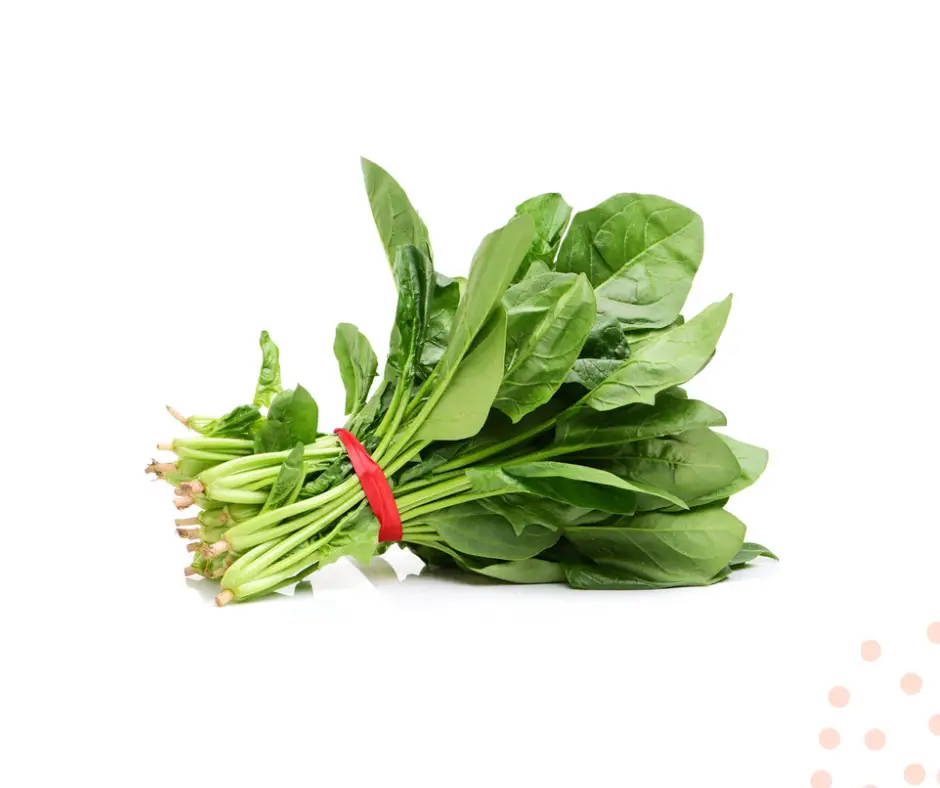Spinach is a popular leafy green vegetable that is often used in salads, soups and stir-fries. However, it may be difficult to find these days.
There are a few reasons for this.
In this article, we will take a closer look at the reasons why spinach may be harder to find at the moment and what it could mean for consumers.
We will also discuss some tips for finding spinach and other leafy green vegetables during a shortage.

Is There A Raw And Frozen Spinach Shortage In 2023? Why Is Spinach Hard To Find?
Have you found themselves asking why spinach, both raw and frozen varieties, seem to be missing from store shelves more often?
As of July 2023, there isn’t a major nationwide shortage of spinach.
However, several factors might explain its occasional absence.
The Demand Factor: Veggie Popularity Spike
One major factor is the noticeable increase in demand during the summer months.
Spring harvest typically meets this demand, but as spinach doesn’t fare well with summer planting due to it turning bitter, stores may run out before the next harvest arrives.
This soaring popularity of spinach is largely driven by its newfound status as a nutrient-packed superfood.
More and more health-conscious consumers are incorporating it into their diet thus considerably depleting grocery store stock levels causing a temporary shortage in certain areas.
The Supply Issue
At the other end of the equation are supply issues being faced by supermarkets.
Many retailers find it difficult to meet increased production costs brought on by rising oil prices required to heat greenhouses for out-of-season produce growth.
Unfortunately, these increased costs sometimes lead them to keep certain vegetables like spinach off their shelves.
With many battling to get their hands on fresh spinach off the shelf, perhaps consider switching to frozen spinach or plan your grocery shopping earlier in the day while stocks last.
Where To Buy Spinach?
On the off chance that your local supermarket’s shelves are devoid of spinach, don’t despair.
There are quite a few alternative avenues to explore:
Farmers Markets
A trip to your local farmers market could be the solution you’re looking for.
Often, they have fresh spinach in stock even when grocery stores do not.
It’s an excellent opportunity to support local growers and enjoy the full flavors of farm-fresh produce.
The Freezer Aisle
When fresh spinach is scarce, turn to its frozen counterpart.
Frozen spinach retains the majority of the nutritional value found in its fresh form and has a significantly longer shelf life—an ideal back-up plan for those periods when fresh spinach is hard to come by.
Online Shopping
If hitting the pavement doesn’t sound appealing or feasible, shift your search online.
Numerous grocery delivery services and online food retailers carry both fresh and frozen spinach, ensuring you can still get your greens without leaving home.
Where Does Most Spinach Come From?
Spinach originates from central and Western Asia.
However, today’s global spinach supply comes largely from two major players: China and the United States.
China: The King Of Spinach
More than 90% of the world’s spinach comes directly from China, which can safely be called the ‘spinach capital’ of the globe.
The country’s dominance in spinach production is monumental and affects the availability of this nutritious vegetable worldwide.
United States And Turkey: Following The Leader
The United States chases China’s lead as the second largest producer of spinach.
Contributing a significant amount to the international supply, the US plays an essential role in ensuring we continue to have access to this superfood.
Turkey tails behind as the third largest producer providing their share to meet global demands.
What Are Good Alternatives To Spinach?
In case you can’t find spinach or want to broaden your culinary horizons, here are some versatile and nutrient-rich alternatives.
Kale
Belonging to the same family as spinach, kale has a slightly bitter and peppery taste, balanced with a satisfying chewy texture.
As a nutritional powerhouse packed with vitamins K, A, and C, antioxidants, and fiber, kale can flamelessly replace spinach in salads, smoothies, soups, and stews.
Swiss Chard
Swiss chard impresses with its vibrant stems and veins along with a mildly sweet flavor.
Rich in vitamins A, K, C, iron, magnesium and potassium – this leafy green works wonders in salads, stir-fries or quiches.
Arugula
Also known as rocket or roquette, arugula offers a spicy kick to any dish.
Crisp in texture and plentiful in vitamin K, folate calcium and nitrates – arugula makes for a refreshing addition to salads, sandwiches or even pizzas.
Romaine Lettuce
Known for its long crunchy leaves and mild flavor – romaine lettuce provides a refreshing crunch along with being packed with vitamin A,K,C folate and fiber.
It perfectly fits into salads wraps tacos making it an easy swap for spinach
Escarole
A type of endive – escarole features slightly bitter curly leaves that lend an earthy nutty flavor to dishes.
With an abundance of vitamins A,K,C iron calcium and prebiotics escarole holds up well in salads soups or braises.
Other Leafy Greens
The green world doesn’t stop here!
You can also turn towards other leafy green alternatives like bok choy, collard greens, turnip greens, beet greens each bringing their own unique taste profile while offering similar nutritional benefits as spinach.

